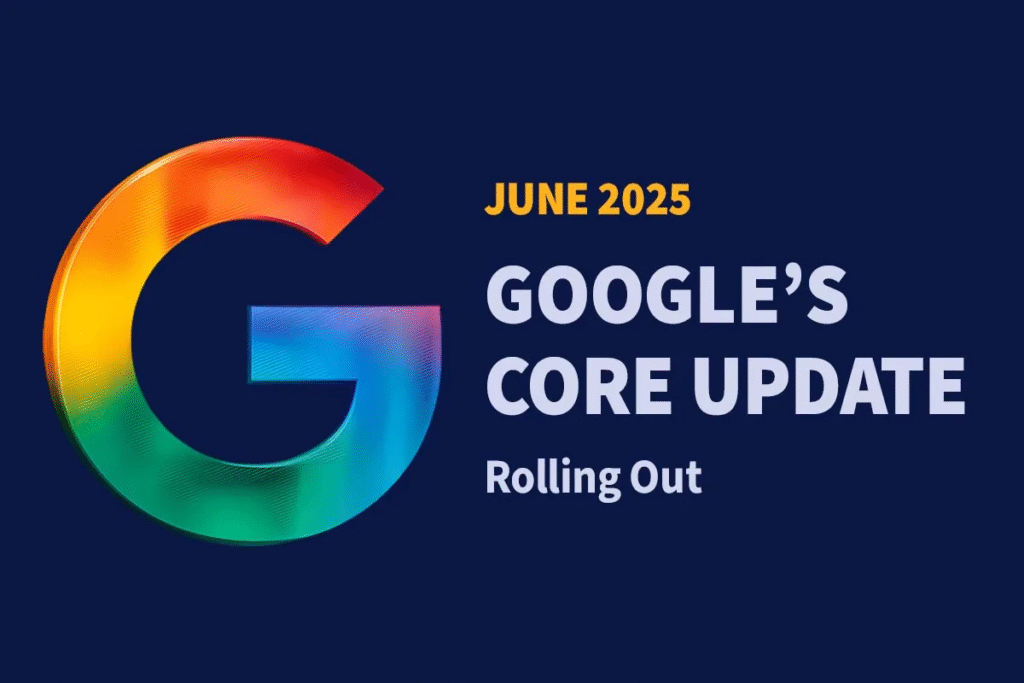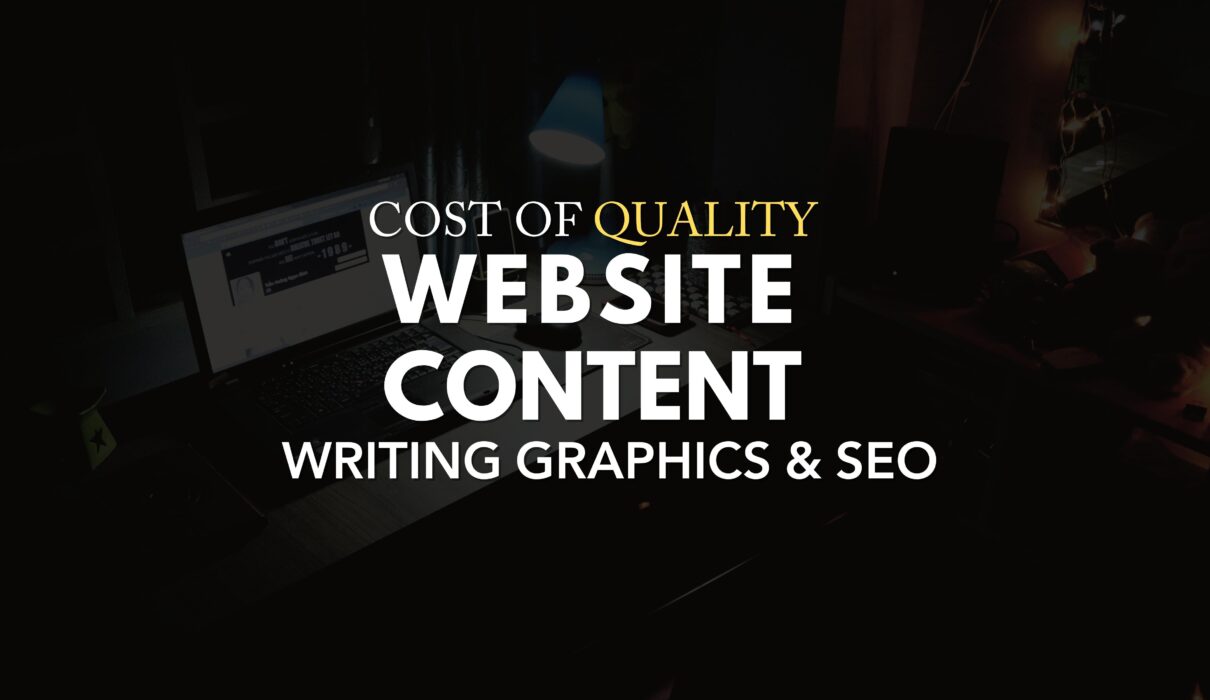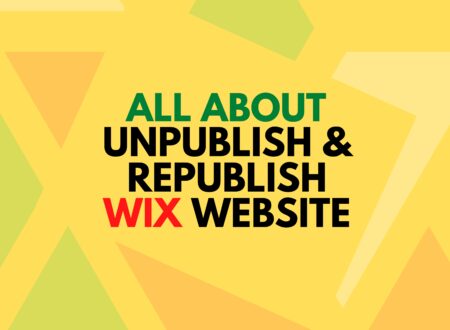Discover what quality content really means, why it matters, and how much website content costs in 2025. Pricing, rates & packages explained.
The factors affecting the cost of high-quality website content writing, and get insights on what you should expect to pay. Read our blog post now to make an informed decision. You can pay your content managers with clarity on types and methods. This article will help both writers and website owners of websites.
Introduction
In the digital age of 2025, quality content is the cornerstone of successful websites and marketing strategies. Crafting content that is valuable, relevant, and well-structured not only attracts visitors but boosts your website’s SEO ranking. However, producing quality content requires investment, and understanding what it entails, along with its cost, is crucial for businesses and creators alike. This blog dives deep into the essence of quality content and the current pricing landscape for website content creation.
BTW, we have an offer for you if you want to create a new website named Get a Site with 50% OFF Creation Fee. You can use Our Services for this, too. It’ll be very minimal, and you’ll enjoy it.
After the Creation of a proper website, the content is the main thing you have to worry about. I Recommend that if you have no much Experience with good or quality content and privacy policy, Liking and Disliking Search Engine then I’ll prefer to Hire a Writer and Manager for Your Website They will help you to make your website according to trends and they will take care of dos and don’t and Chances of earning will much good and You can search for different services on freelancing websites according to your check and balance and satisfaction.
No Doubt, Good Content is the main pillar of the website, which will help you to insist on search Engines or Google ranking your content. Let’s Discuss Quality Content:
Quality Content for a website
Quality content refers to well-researched, original, and user-focused material that meets the intent of the audience while providing valuable information. It is content that answers questions comprehensively, is easy to read and navigate, and demonstrates authority and trustworthiness. In 2025, Google’s ranking algorithms prioritize content that aligns perfectly with user intent, offers fresh perspectives, and ensures an excellent user experience, including fast load times and mobile-friendliness.
“Quality content” is more than words — it’s about delivering value, clarity, and engagement. It answers the reader’s question, provides solutions, and establishes your business as an authority.
Key elements of quality content:
- Clear, well-structured, and easy to read
- Optimized for SEO (keywords, readability, meta tags)
- Adds value and solves problems
- Original, plagiarism-free writing
- Encourages action (sign-ups, purchases, inquiries)
Research published by Backlinko
There are over 1.98 billion websites online worldwide, and this number continues to grow daily. While many may argue that every piece of content is quality and valuable, this claim doesn’t fully hold up under scrutiny. Instead, the facts show that quality content must meet specific criteria to stand out and rank well.
Quality content is unique, informative, thoroughly researched, and aligned with user intent. It provides real value rather than just filling pages with generic or repetitive information. In 2025, Google’s algorithm emphasizes content depth, relevance, and user satisfaction as key markers of quality content, narrowing down the vast amount of online content to what truly benefits users
According to Google’s CEO, Sundar Pichai,
Google analyzes over 200 ranking factors in 2025 to determine the quality and relevance of content for search results. Google’s search algorithm has evolved profoundly with aggressive AI integration, including technologies like BERT, MUM, and the new Gemini model, which improve language understanding and allow Google to answer more complex queries with better precision.
Factors guide what Google classifies as high-quality content in 2025
- Consistent publication of satisfying content remains the most important factor, accounting for 23% of Google’s ranking influence in 2025.
- Keyword optimization in meta titles continues to be essential, contributing about 14% to ranking relevance by helping search engines understand page topics.
- Backlinks from reputable sites act as votes of confidence and make up 13% of the ranking weight, reinforcing content authority.
- Niche expertise and user engagement hold significant weight around 12-13%, emphasizing the importance of content that is authoritative and interactive.
- Freshness of content, mobile-friendliness, and trustworthiness also play crucial roles, contributing between 4% to 6% each in the overall algorithm.
- Page speed and site security (SSL) remain technical essentials, each influencing about 2-3% of the ranking signals.
- Proper internal linking structure, while slightly less influential than before, still matters as part of site architecture and user experience.
- Google’s ranking systems heavily focus on user intent and reward content aligned with E-E-A-T principles: expertise, experience, authority, and trustworthiness, ensuring content is helpful and credible.
This comprehensive set of factors guides what Google classifies as high-quality content in 2025, making them critical considerations for SEO success.
Why Quality Content Matters for SEO in 2025
Search engines like Google have evolved to evaluate content quality not just by keywords but by relevance, originality, and overall user satisfaction. Quality content helps improve search rankings, builds brand authority, and increases organic traffic. Moreover, it keeps visitors engaged longer and encourages social shares and backlinks, further enhancing SEO.
How Much Does Website Quality Content Cost?
Typical Pricing Models
- Per word: Ranges from $0.10 to $0.50 depending on writer expertise and topic complexity.
- Per page: Website pages may cost between $100 to $1,500 each, depending on length and research depth.
- Per project: Flat rate for entire website content can range between $500 to $5,000+, varying with site size and detail level.
Factors Affecting Cost:
- Research intensity and content originality
- Writer or agency experience and reputation
- SEO optimization and keyword research included
- Content length and format (blog posts, landing pages, product descriptions)
Investing in Quality Content
| Pros | Cons |
|---|---|
| Improves search engine rankings | Higher upfront investment |
| Builds brand trust and authority | Takes longer to produce |
| Boosts traffic and user engagement | Requires ongoing updates |
| Enhances user experience and site usability | Needs professional expertise |
| Supports conversion through compelling messaging | Can be costly for small budgets |
Quality Content vs. Low-Quality Content
| Feature | Quality Content | Low-Quality Content |
|---|---|---|
| Originality | Unique, well-researched | Duplicate or spun content |
| User Intent | Meets and exceeds visitor needs | Fails to satisfy queries |
| Readability | Clear, structured, easy to navigate | Poor grammar, jumbled, keyword stuffed |
| SEO Value | Optimized naturally with keywords | Keyword-stuffed, lacks optimization |
| Engagement | Encourages shares, backlinks, and comments | Low engagement, high bounce rates |
Google’s core updates, including June 2025

Refine how search algorithms assess content quality, relevance, and user experience across all industries. These updates aim to reward content that is genuinely helpful, authoritative, and user-first, further emphasizing Google’s E-E-A-T standards (expertise, experience, authority, and trustworthiness). The Helpful Content Update of 2024 integrated deeply into Google’s core ranking system, targeting and demoting content that is unhelpful or primarily designed for search engines rather than users.
Many sites negatively affected by the 2023 and 2024 updates have seen partial recoveries during 2025’s core updates by aligning their content with user intent, improving factual accuracy, and enhancing overall content quality.
SEO in 2025 must focus on creating meaningful, original, and expertly crafted content combined with strong technical SEO to thrive in the competitive landscape shaped by these continuous algorithm improvements.
Updated for 2025, the March Core Update significantly tightened Google’s approach to low-value content, including AI-generated or copy-pasted material produced with minimal effort. Websites relying on such content suffered notable penalties as Google reinforced its commitment to promoting maximum content quality and user value.
“Not helpful” or low-value content, meaning pages that focus more on ranking manipulation than genuinely satisfying user needs, no longer perform well in search results. Google now prefers content written primarily for users rather than search engines, favoring generic, naturally optimized content over overly SEO-manipulated pages.
To monitor Google’s impact on your page rankings during such updates, tools like SEMrush’s Sensor provide real-time insights into fluctuations and algorithm activities, helping site owners adjust their strategies promptly.
<iframe
width="540"
height="320"
src="https://www.semrush.com/sensor/static/widget/us/s/"
frameborder="0"
scrolling="no"
allowtransparency="true">
</iframe>Areas of Website Content
Areas of website content in 2025 cover a broad spectrum of formats designed to engage diverse audiences across industries. Understanding these areas helps you create a well-rounded content strategy that enhances user experience, boosts SEO, and drives conversions. Here is a detailed, step-by-step explanation of the key areas of website content:
1. Textual Content
This is the backbone of most websites and includes blogs, articles, guides, how-tos, lists, FAQs, and case studies. Textual content should be SEO-optimized, well-researched, unique, and easy to read. It helps explain your products, services, or ideas and answers user queries effectively.
2. Multimedia Content
This area includes images, videos, infographics, podcasts, and animations. Multimedia makes content more engaging, improves dwell time, and enhances comprehension. For example, videos explaining a product or infographics summarizing data cater to visual learners and increase shareability.
3. Interactive Content
Increasingly popular in 2025, interactive content such as quizzes, polls, calculators, and AR/VR experiences actively engages visitors. This content type encourages participation, provides personalized experiences, and can generate valuable user data.
4. Downloadable and Gated Content
This includes eBooks, white papers, reports, and templates that users can download, often gated behind email sign-ups. This content builds authority, generates leads, and provides in-depth insights on complex topics.
5. Landing Pages
Focused on conversion, landing pages are designed with a single objective, like capturing leads, selling products, or promoting events. These pages require clear, persuasive copy, strong calls to action (CTAs), and a clean layout.
6. Social Proof and Testimonials
Displaying customer reviews, testimonials, case studies, awards, and certifications builds trust and credibility. User-generated content and third-party endorsements are key to influencing purchasing decisions.
7. News and Announcements
Corporate news, press releases, and updates keep your audience informed about important events, product launches, or corporate social responsibility efforts.
8. Emails and Newsletters
Though not directly on the website, subscription-based email newsletters tie closely to website content by driving traffic, promoting engagement, and nurturing leads.
9. User-Generated and Community Content
Forums, comments, user reviews, and social media feeds allow your audience to contribute and interact, building a sense of community around your brand.
By combining these diverse content areas strategically, websites in 2025 create rich, dynamic experiences that attract, engage, and convert users effectively. Prioritizing a content mix based on audience preferences and business goals ensures maximum ROI on content marketing efforts.
This full-spectrum content approach is crucial as user behavior diversifies and search engines increasingly reward content that is engaging, authoritative, and multimedia-rich.
What is Article Writing and Why Does It Matter?

- Article writing is the process of creating clear, structured, and engaging content aimed at informing, educating, or entertaining a specific audience.
- It involves presenting a focused message supported by research or insights in a way that captures the reader’s interest and delivers valuable information.
- The importance of article writing includes:
- Effective communication of ideas.
- Building authority and credibility.
- Enhancing SEO to improve search engine rankings.
- Driving traffic to websites or platforms.
- Establishing meaningful connections with readers.
- In marketing and education, well-crafted articles are essential for:
- Sharing knowledge.
- Influencing opinions.
- Supporting brand growth and visibility in the evolving digital landscape of 2025.
- Good article writing balances three main elements:
- Clarity: Ensuring the message is easily understood.
- Relevance: Providing content that matters to the target audience.
- Engagement: Keeping readers interested throughout the article.
- According to Google and industry experts:
- Articles should be a minimum of 900 words and can go up to 2500 words, depending on the topic.
- Writing should be in good, accessible language to hold the attention of diverse users.
- Users prefer content they can engage with easily; otherwise, they move on quickly—and this impacts retention and bounce rates.
- Proper formatting is crucial for readability and user engagement:
- Divide content into well-organized sections with headings and subheadings.
- Use justified alignment for a cleaner presentation of text.
- Keep sentence length appropriate to avoid reader fatigue.
- Structure paragraphs to facilitate easy scanning and comprehension.
- Focus on giving a better impression through formatting that aligns with user attraction principles and expert recommendations.
- Overall, article writing remains a powerful tool for businesses, students, and content creators to communicate effectively, build authority, and grow their audience in 2025’s highly competitive online environment.
Media Graphics and Other Attachments

Media graphics and other attachments on a website refer to the various visual and interactive elements used to enhance user experience, engagement, and communication. These include images, photos, illustrations, icons, videos, animations, infographics, and interactive media like sliders or 3D models. Graphics add visual appeal, break up text for readability, and help explain complex ideas quickly. Other attachments can include downloadable files like PDFs, audio files such as podcasts or music, and even interactive tools like calculators or quizzes.
In 2025, multimedia content is crucial as websites increasingly focus on immersive and dynamic experiences, blending vibrant visuals with smooth interactions to capture users’ attention and convey messages effectively. Integrating high-quality media and attachments strategically improves SEO, user retention, and conversion rates on your site.
Why ON-PAGE SEO is important?

- Improves Search Rankings: Optimizing content and page elements helps your site rank higher on Google and other search engines.
- Increases Quality Traffic: Drives targeted visitors who are actively searching for your products or services.
- Enhances User Experience: Proper page structure, fast loading, and mobile-friendly design keep visitors engaged longer.
- Boosts Conversion Rates: Clear navigation and relevant content encourage visitors to take desired actions, such as buying or subscribing.
- Gives Control Over Content: On-page SEO is fully in your control, allowing you to optimize titles, headings, meta descriptions, and internal links.
- Helps Search Engines Understand Your Content: Proper use of keywords, schema markup, and alt text improves indexing and relevance.
- Supports Local SEO: Optimizing for local keywords improves visibility in local search results, attracting nearby customers.
On-page SEO is the foundation of all SEO efforts because it directly impacts how well your pages perform in organic search results and how users interact with your site.
Cost of Quality Content for a Website in 2025
- Blog Posts: Typically cost between $150 to $600 per post, depending on length and complexity; detailed guides or technical articles cost more.
- Monthly Content Marketing: Businesses spend from $2,000 to $15,000+ per month covering blog posts, social media, videos, and email marketing campaigns.
- Small Business Budget: Around $1,000 to $2,500 monthly can cover 2-4 blog posts, social media updates, basic newsletters, and simple graphics.
- Mid-Size Business Investment: Budgets range from $7,500 to $10,000 monthly for more content variety, including weekly blogs, videos, case studies, and conversion-focused content.
- Freelancers vs Agencies: Freelance content writers usually charge $20-$80 per hour; agencies charge $50-$200+ per hour, offering more expertise for complex projects.
- Additional Costs: SEO optimization, keyword research, and multimedia integration (videos, images) can add $500 to $5,000+, depending on scope and quality.
Understanding these cost ranges helps businesses budget effectively and invest in quality content that drives traffic and boosts conversions in 2025.
Cost of Content Writing Explained in (2025)
- Hourly Rates: Entry-level content writers charge around $19-$25 per hour, while experienced writers, especially technical specialists, charge $30-$80+ per hour.
- Per Word Pricing: Beginners may charge $0.05 to $0.10 per word; intermediates $0.12 to $0.25; advanced writers can demand $0.50 to $1 or more per word.
- Project-Based Fees: Content writers often set flat rates for blog posts or website pages, ranging from $50 to $1,000+, depending on length and complexity.
- Freelance vs Full-Time: Freelancers typically charge by project or hour, while salaried content writers earn an annual income averaging $40,000 to $80,000, depending on experience and location.
- Additional Costs: Research, SEO optimization, editing, and multimedia integration may increase costs, often adding hundreds to thousands of extra dollars based on project scope.
These pricing models help businesses plan their budgets for professional content creation that attracts and converts in 2025’s competitive digital landscape.
Cost of Graphic Designers and Editors in 2025

- Hourly Rates for Graphic Designers: Average around $40 to $80 per hour; entry-level designers can charge $20–$30/hour, while senior specialists may command $70–$150/hour depending on expertise and location.
- Project-Based Pricing: Logo designs typically range from $300 to $1,500 for freelancers and can exceed $5,000 with agencies; website-related graphic work ranges $1,000 to $5,000+.
- Editors and Video Editors: Rates vary widely; beginner video editors charge around $25-$50/hour, while experienced editors charge $60-$120+ per hour, depending on project complexity.
- Freelancer vs Agency Costs: Agencies charge higher rates but provide broader services with guaranteed quality; freelancers offer flexibility and competitive pricing but vary in reliability.
- Additional Costs: Revisions, rush orders, and specialized tasks such as animation, 3D design, or brand identity development may increase the total cost significantly.
Investing appropriately in graphic design and editing ensures professional visuals that enhance brand image and user engagement across digital and print channels in 2025.
SEO content writing cost
- Freelancer Hourly Rates: Typically range from $25 to $150 per hour, depending on experience and project scope.
- Per-Project Costs: Basic on-page SEO projects can cost between $300 and $3,000 for small to medium websites.
- Agency Monthly Retainers: Range from $1,000 to $10,000 per month based on the website size, industry, and complexity of SEO work.
- Enterprise-Level SEO: Large organizations may spend $5,000 to $50,000+ per month on comprehensive on-page SEO services.
- One-time SEO Audits: Detailed technical and content audits typically cost between $500 and $5,000, providing actionable insights.
- Additional Factors Influencing Cost: Website size, industry competition, technical complexity, and SEO tool subscriptions can affect overall pricing.
Investing wisely in on-page SEO is crucial for improving organic traffic, user experience, and search engine rankings in 2025’s competitive digital space.
After all, you have to hire an SEO –Search engine Optimization expert and he’ll upload the Article to your site with proper Formatting of text and media and use Techniques about SEO like Inbound and outbound linking, and much more. You can hire from the freelance marketplace, and the Price Starts from 15 USD to goes on and on.
How much does website content cost
- Per-word pricing for website content typically ranges from $0.02 to $0.50, depending on expertise and country. For example, in India, web content might cost between 2 to 6 INR per word (approx. $0.02-$0.07) for experienced writers.
- In the US and similar markets, experienced copywriters charge around $0.50 to $0.80 per word for SEO-optimized and well-researched website content. This often includes in-depth research, editing, and strategy.
- Pricing models vary and include per word (common for blog posts, articles), per hour (useful for complex projects requiring research), and per project or package rates. Freelancers may charge less than agencies.
- For small to medium websites, typical project costs might range from a few hundred dollars to several thousand dollars, depending on the number of pages and content depth. For example, content creation packages starting around $450 for 5,000 words are available.
- Entry-level writers generally charge less (around $0.05 to $0.10 per word), while expert industry writers command higher prices ($0.12 to $0.25+ per word), especially for technical or niche content.
website copywriting cost breakdown

- Website copywriting costs vary widely, typically ranging from about $25 to $25,000 per page, depending on factors like content length, type, complexity, and copywriter experience.
Pricing models:
- Per page:
- Per word:
- Per project or hourly:
Factors affecting cost:
- Complexity of the subject matter and research required.
- Number of pages or length of content.
- Level of SEO optimization and keyword research.
- Copywriter’s expertise and reputation.
- Whether the tone of voice and brand guidelines are already defined or need to be developed.
Typical cost examples:
- A 5-page website with professional copywriting can cost around $1,900 to $2,200 or more.
- High-end agency or specialized copy can reach $2,500+ per page.
Conclusion
Quality content is more than just words on a page in 2025—it’s a strategic asset that drives SEO, builds authority, and enriches user experience. Investing in professionally crafted website content pays dividends in traffic, engagement, and ultimately, business growth. Understanding the cost and value helps you make informed decisions to elevate your online presence.
The question “How much does website content cost?” doesn’t have a one-size-fits-all answer. Prices depend on quality, expertise, and the writer or agency you hire.
The key takeaway: Invest in quality, not just cost. Good content pays for itself by ranking higher, building trust, and driving sales
How often should I update my website content?
Regular updates keep content fresh and relevant, which helps maintain SEO rankings and user interest.
Are there affordable content writing services available?
Yes, freelance marketplaces and agencies offer varied pricing models suited to different budgets and project scopes.
- Top 20 Trusted Online Earning Sites With Skill And Without Skill in 2025 - March 1, 2025
- 50% OFF on WordPress Website Design Services: Get Your Website for Just $199 - January 4, 2025
- Top 6 Web Developer Soft Skills & Hard Skills in 2024 - December 18, 2024







